During my visit to China in the past two weeks, I realized the brutal reality. Below are the comparisons what one sees in China and in the USA:
Set:

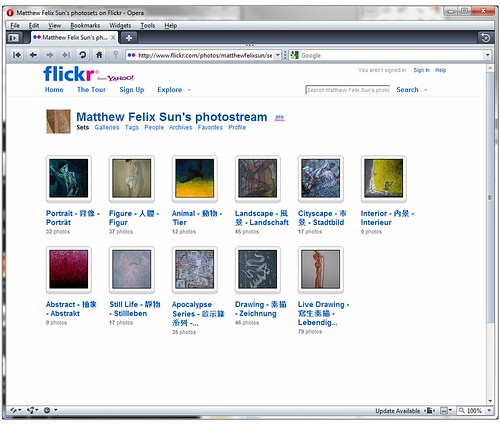
Portrait:
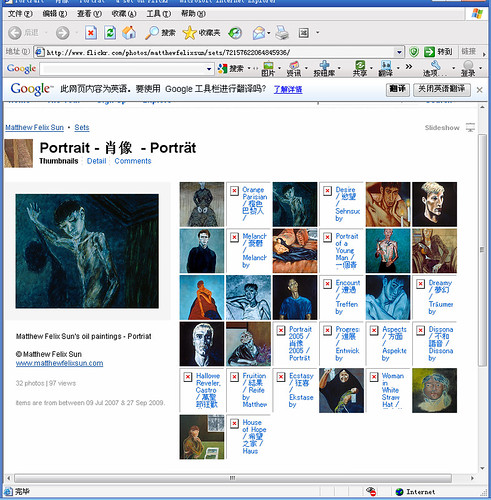
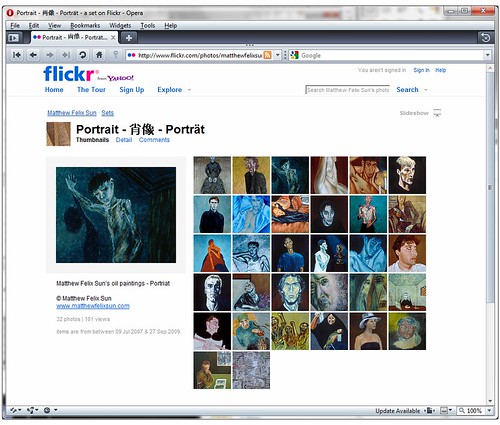
Figure:
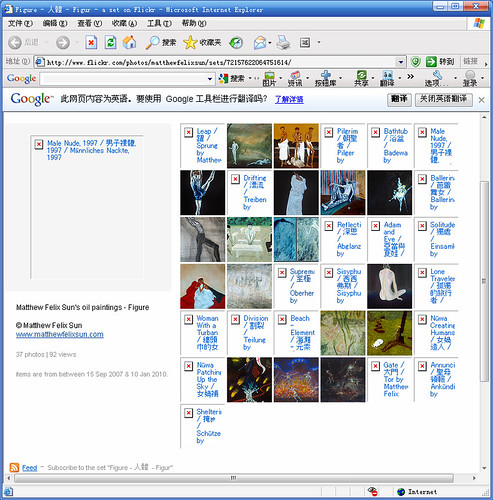
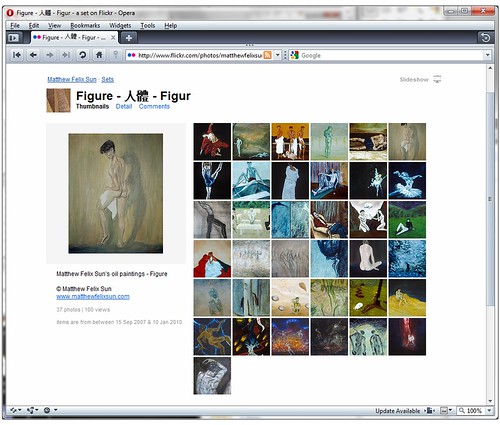
Animal:
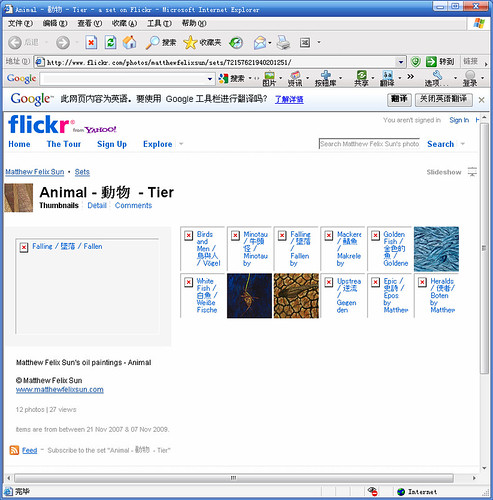
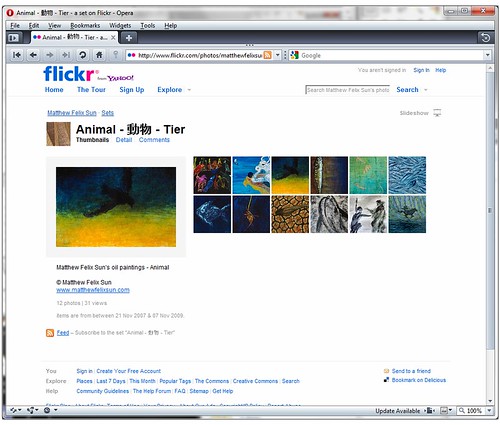
Landscape:
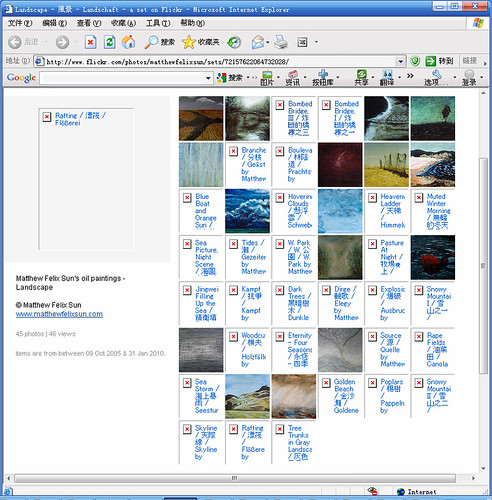
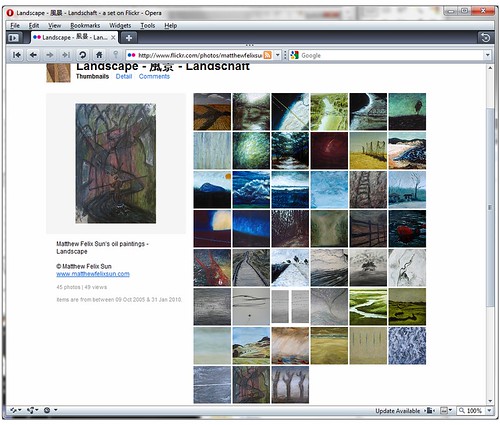
Cityscape:
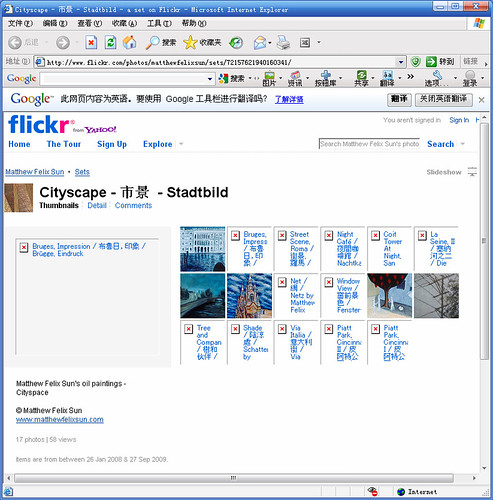
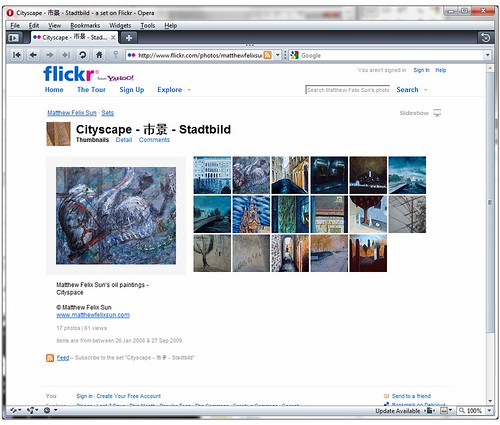
Interior:

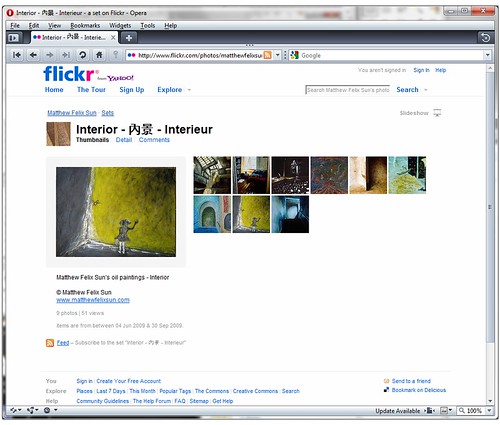
Abstract:
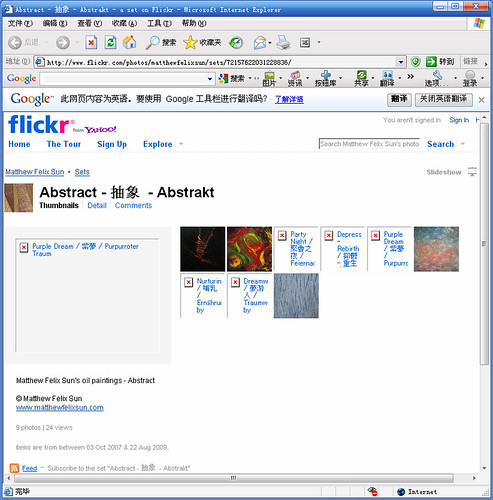
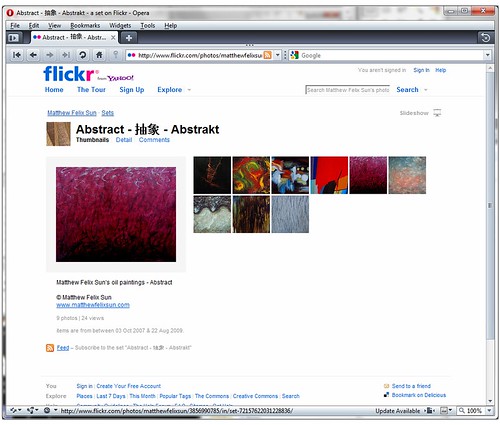
Still Life:
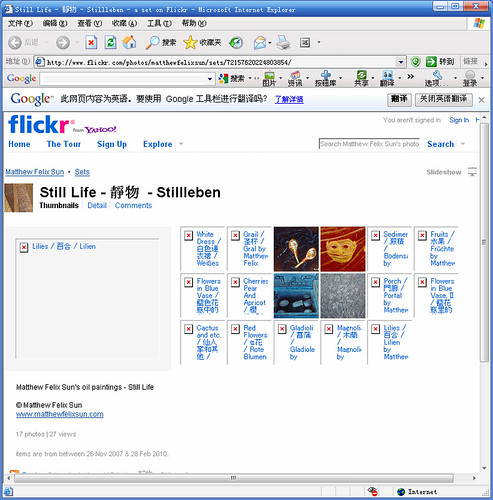
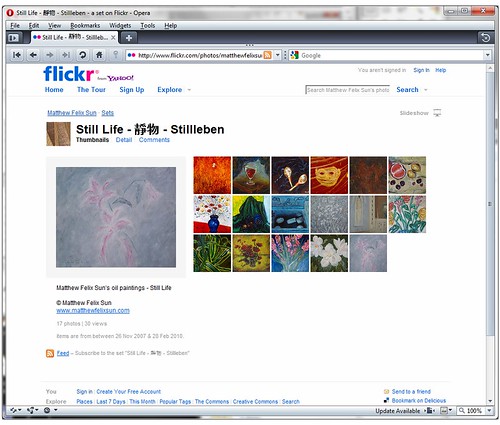
Apocalypse Series:
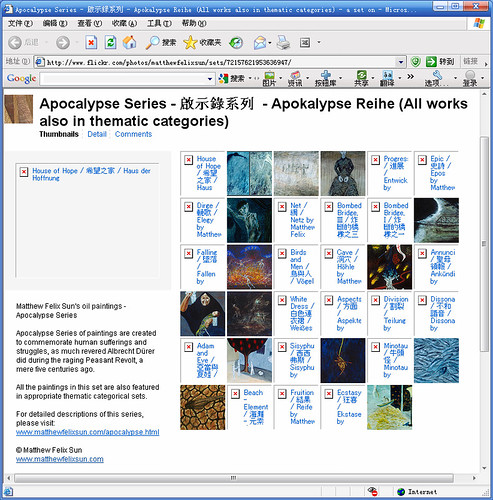
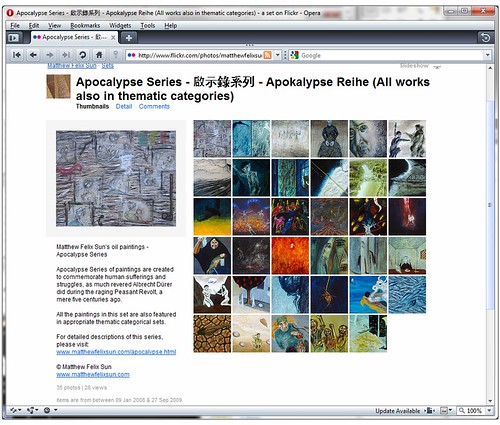
Drawing:
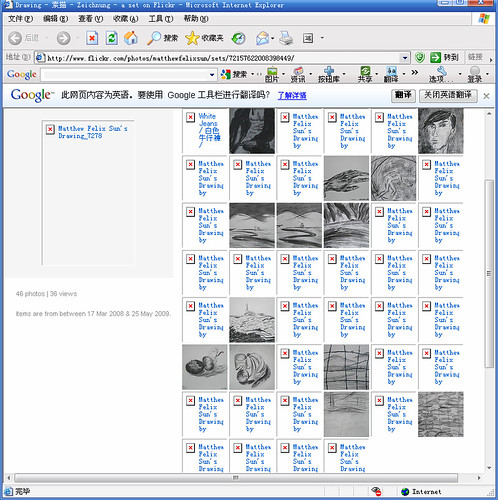
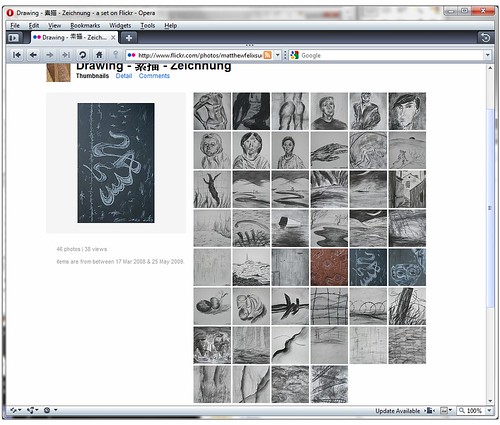
Live Drawing:
Page 1a:
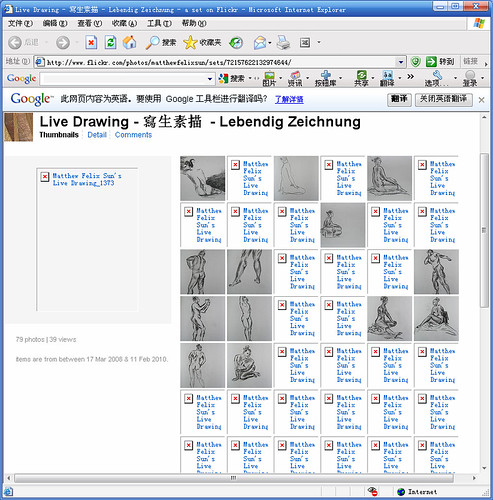
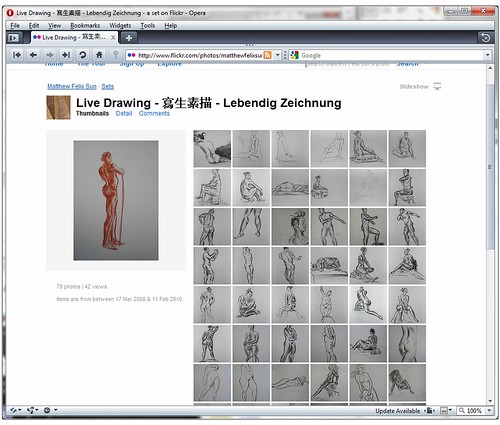
Page 1b:
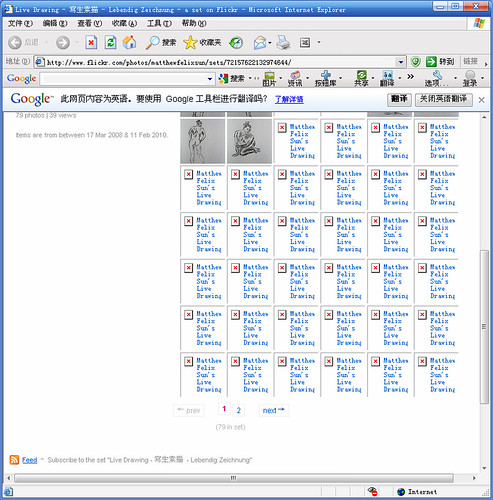

Page 2:
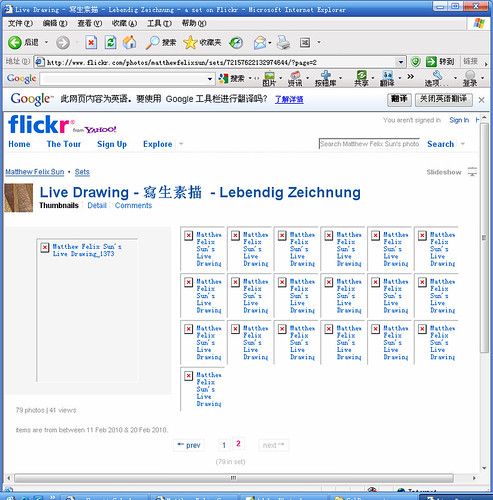
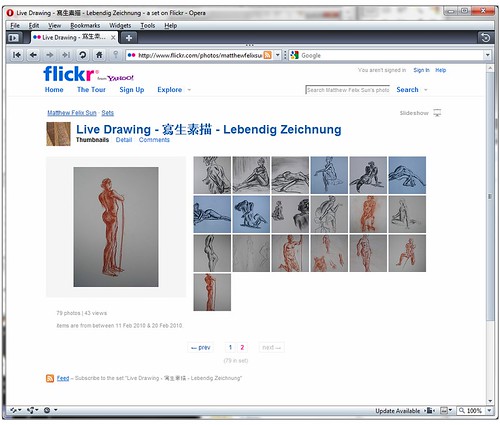
The capriceness of the censoring is astounding.
Drill down further, one can see the "reason" behind censoring "Dissonance", but why "Red Flowers"? Expecting reason apparently was too much.
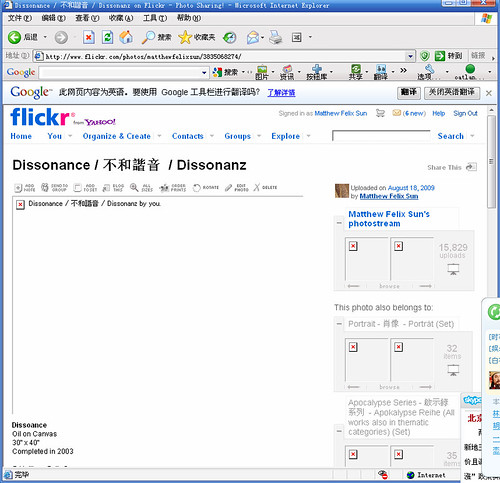
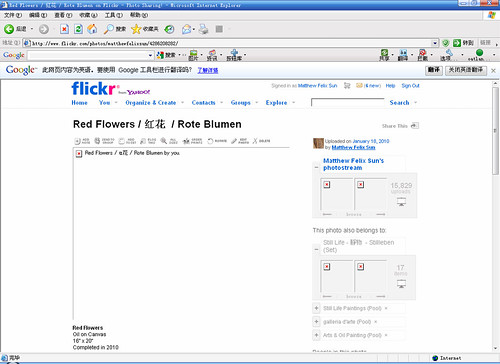
It was during my staying in China, that Google moved its Chinese business from mainland to Hong Kong.
There were many comments regarding Google's move. The gist of a very interesting comments was like this: on the information high speed train, a passenger (Google) disobeyed the rules and was kicked off the train. The rest passengers need to follow the regulations and close the curtains, refrain from viewing the landscape. Next stop: Pyongyang.
Many pro and con comments can be viewed at:
http://news.bbc.co.uk/2/hi/asia-pacific/8583006.stm, which is a fascinating read.





Matthew, the question this raises in my mind is whether the censoring is driven by machine / algorithm, or whether it is the product of many many humans poring over materials to decide whether they are "safe" for Chinese citizens to consume. If the latter, I wonder whether everything is prohibited until human-approved, or if things are permitted by default then selectively prohibited.
ReplyDeleteI wonder whether you can discern any pattern to the images that are blocked. The example you gave suggested that the title of the image (e.g., "Dissonance") might be a factor in its prohibition if it has a dicey political ring to it. What about tags on the image? What about double-entendres / puns or other similar language games that might be implied in the Chinese characters with which images are titled?
Steve -
ReplyDeleteyou raised an interesting and important question. On one hand, I would think that it is done by machine/algorithm. On the other hand, I have heard of a vast teams of net monitors employed there - not only for ideology but for profit as well - for example, a corporation can hire them to take out negative feedback on their products. This for profit censorship has been reported on People's Daily and the Chinese government is vocally criticizing it.
Let's look at two examples - - my paintings "Red Flowers" and "Dissonance" cannot be viewed there. Obviously, "Dissonance" is not "acceptable" but why "Red Flowers"?
Looking into my tags, I realized that "Red Flowers" was published by "Synchronized Chaos". Perhaps that's why?
But some of the drawings give no clue. For example, this untitled drawing (Matthew Felix Sun's Drawing_7192) seems to me has no "suspicious" tags.
Some of my drawings have exact same tags but one was available to view (Matthew Felix Sun's Drawing_7261) and the other one (Matthew Felix Sun's Drawing_7245) was not. The unavailable one incidentally has images of crosses. That reasons about human factors. Then another drawing (Matthew Felix Sun's Drawing_7231) has the same tags as those two with no "questionable" image but was still unavailable.
Perhaps the seemingly random screening is a mind controlling tool as well?
Thanks, Matthew ...
ReplyDeleteIf you two geniuses played for the other team, it might occur to you that "Red Flower" is a likely tag on revealing photos of Chinese girls ;^)
ReplyDeleteSeriously, though, this is pretty interesting, and does indeed make me wonder how they are doing this. If they are paying folks to do this, I have to say that it is a less destructive way to stimulate the economy than the US gubmint pursues building bombs and nonsense like Ronnie Raygun's StarWars program (or, here's a good one: someone is funding research on automated social networking for ancient Babylonian societies - sheesh!).
Reading up on Chinese censorship on Wikipedia, and looking more closely at the Flickr images from my account that are blocked vs. those that are unblocked, it looks like (at least on my account) images stored on servers with even numbers show up (farm2.static.flickr.com, etc), but odd numbers don't (farm5.static.flickr.com). If you go to "all sizes" above an image, and scroll down to see the photo's URL, you can see what server it's on. You might want to try that with your own images to see if that explains what shows up vs. what doesn't.
ReplyDeleteQuinn, thank you for the further search on Flickr. I tested mine and found out that all my unblocked images are on servers with even numbers (farm4.static.flickr.com) while blocked images are either on odd numbers (farm3.static.flickr.com or farm5.static.flickr.com). They must have done something to the serves in wholesale.
ReplyDelete